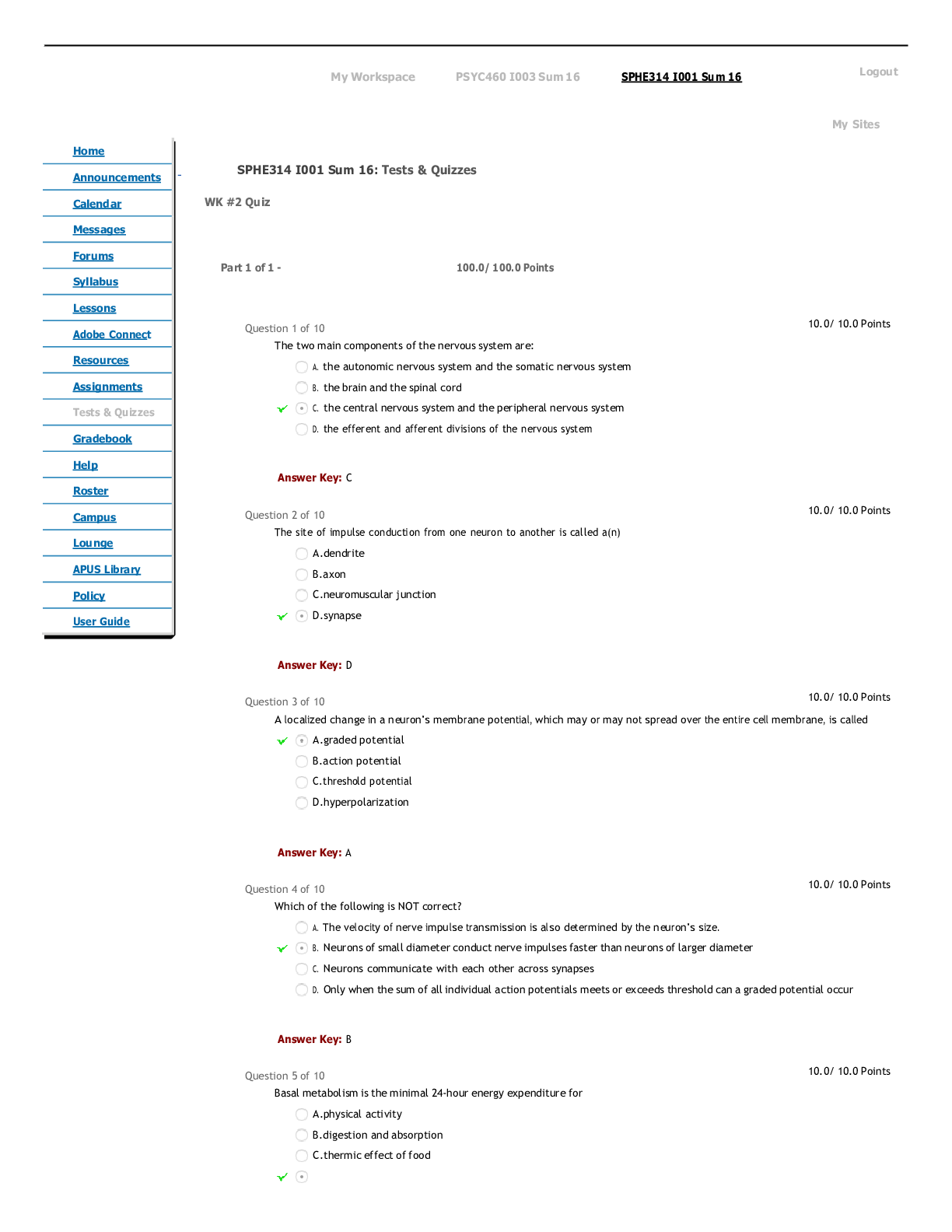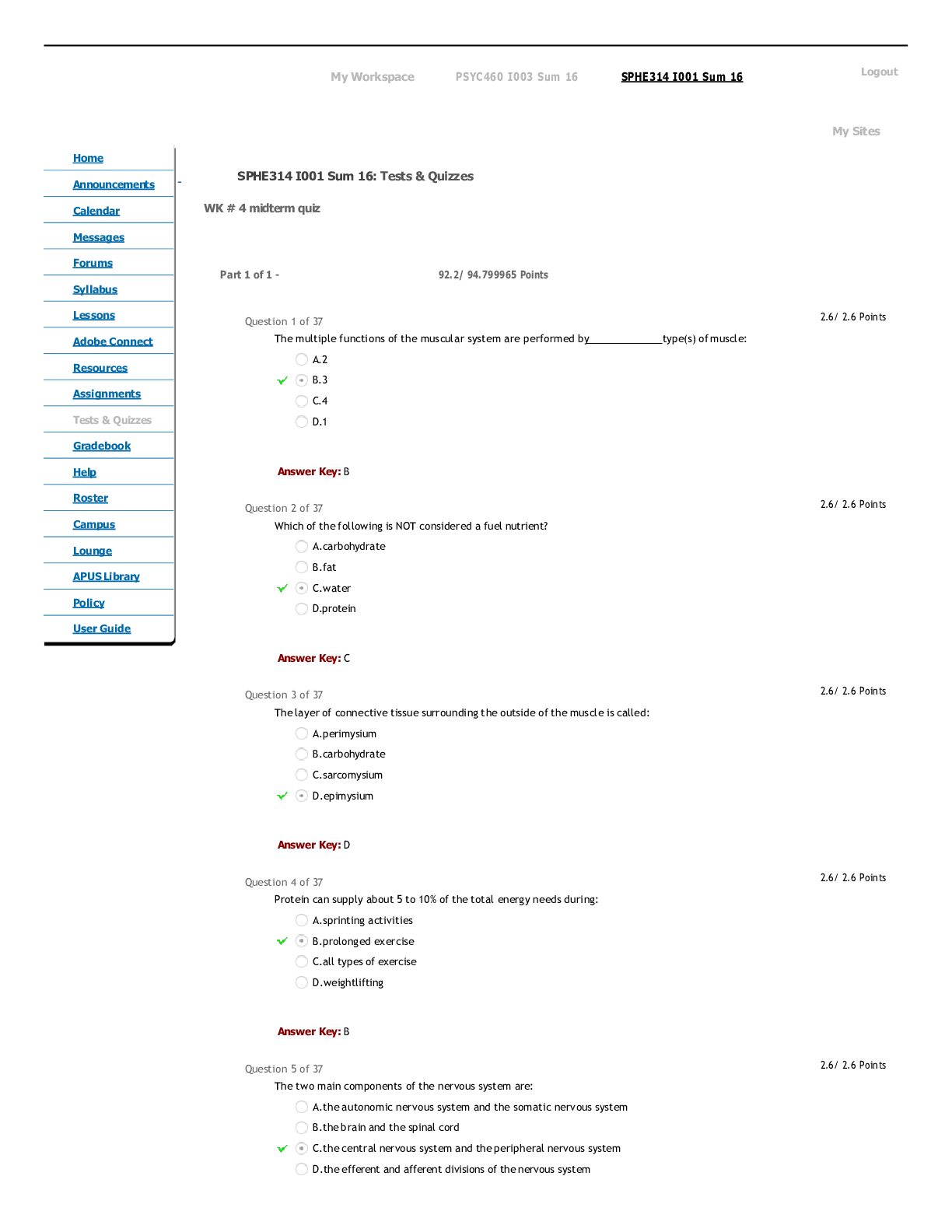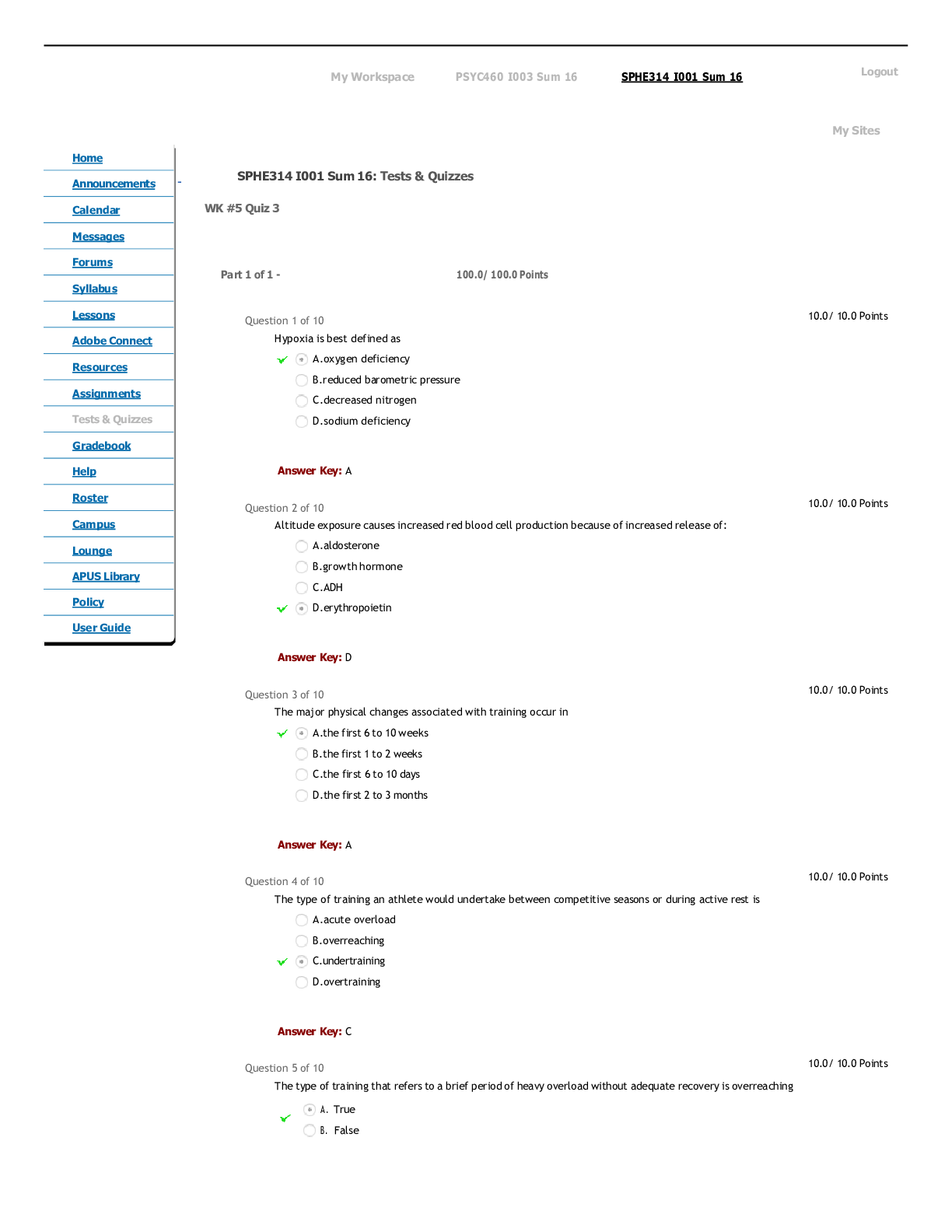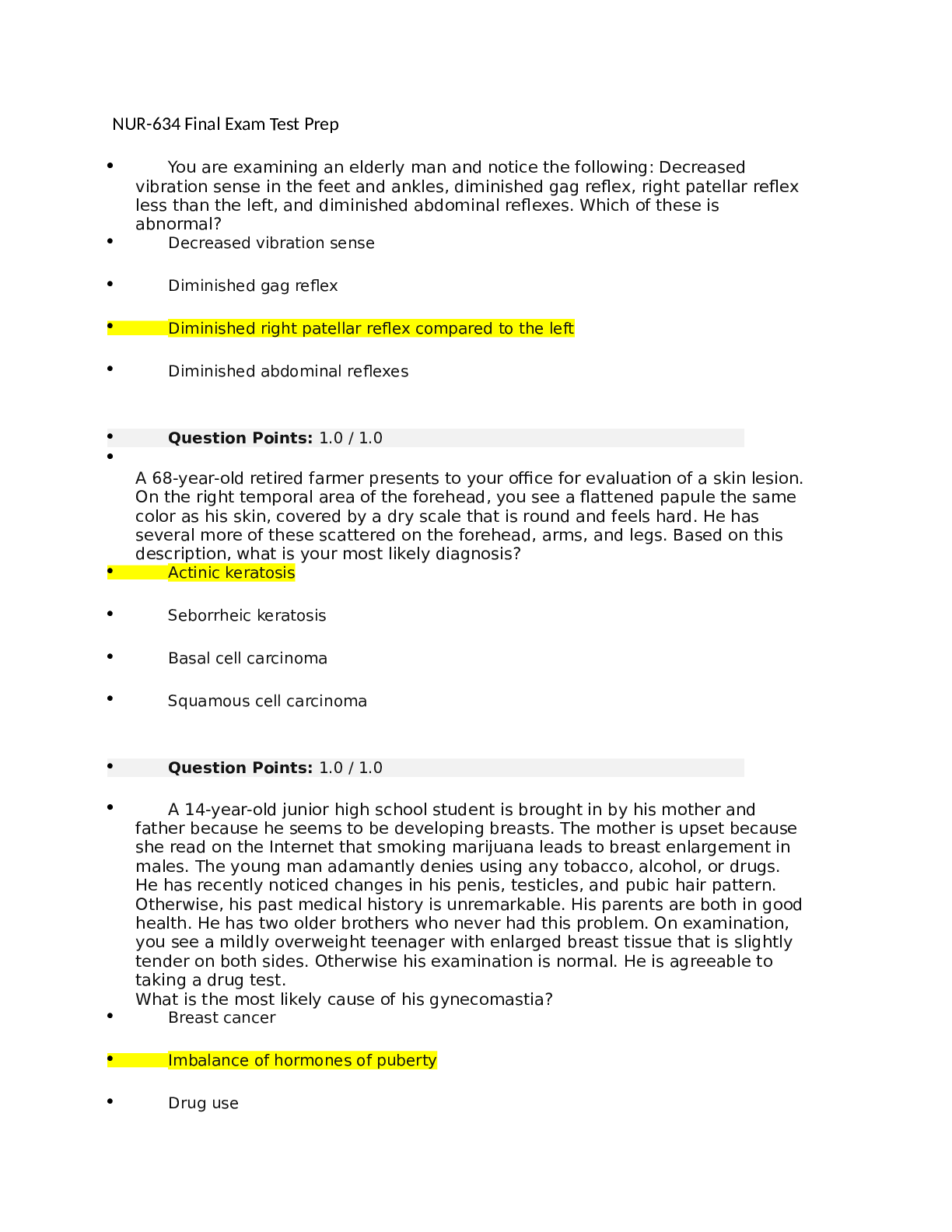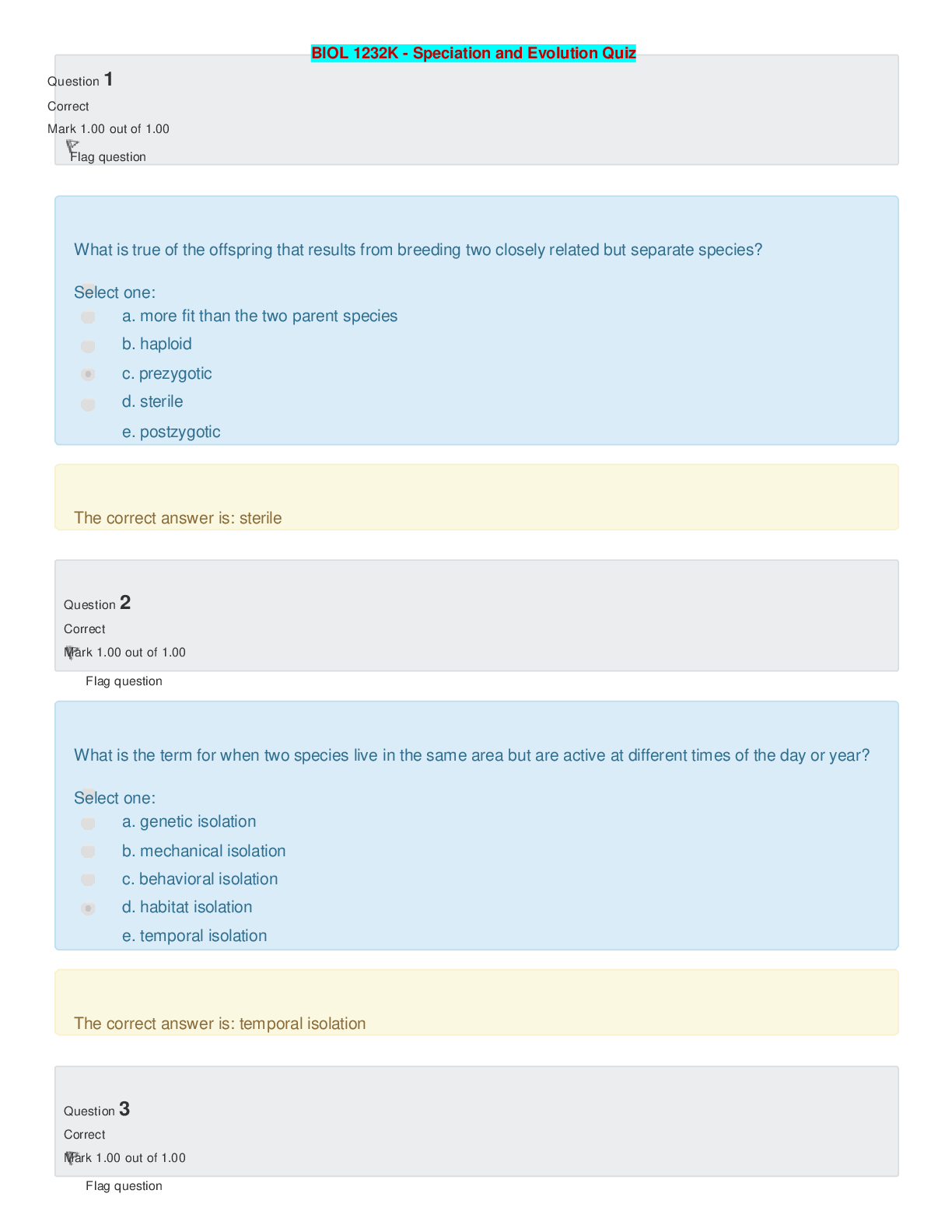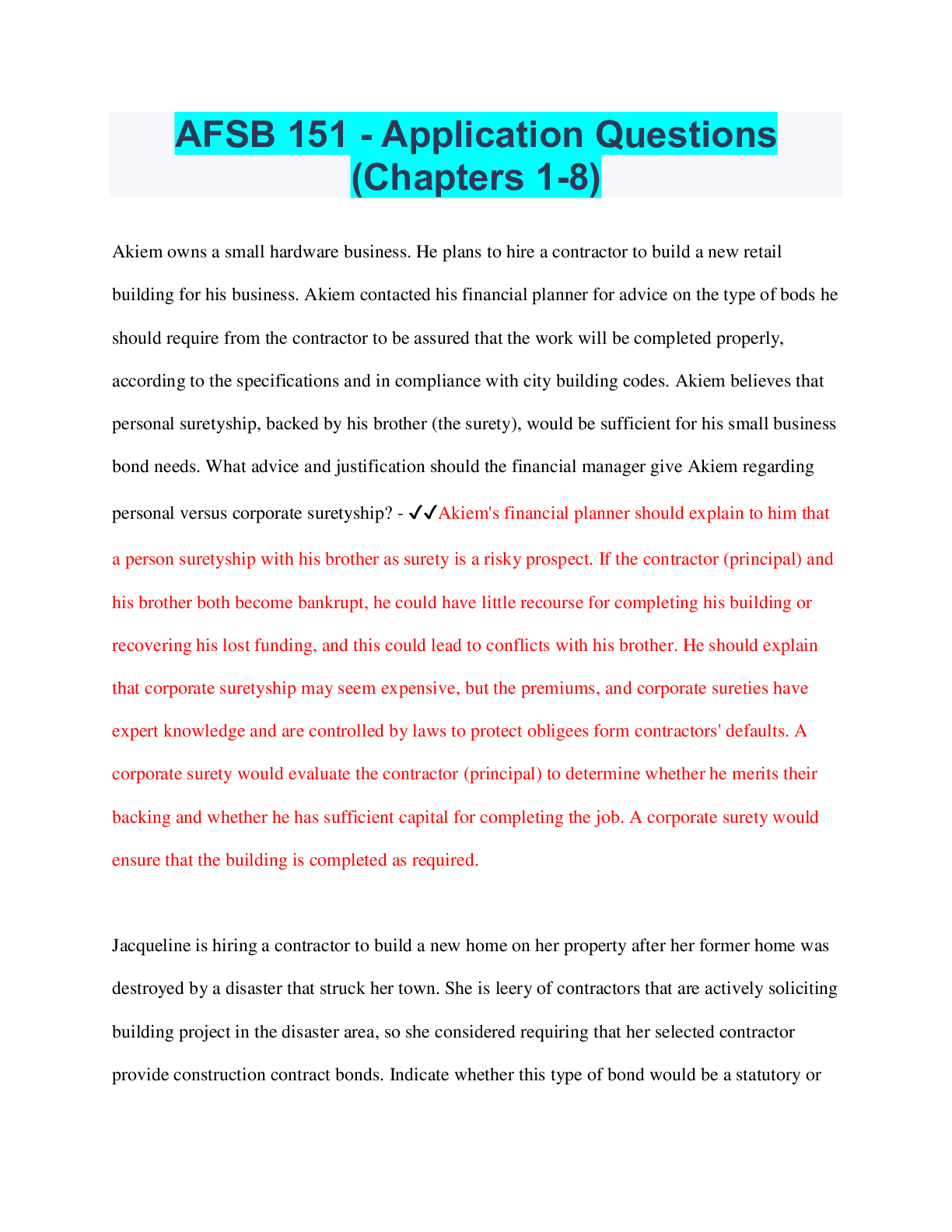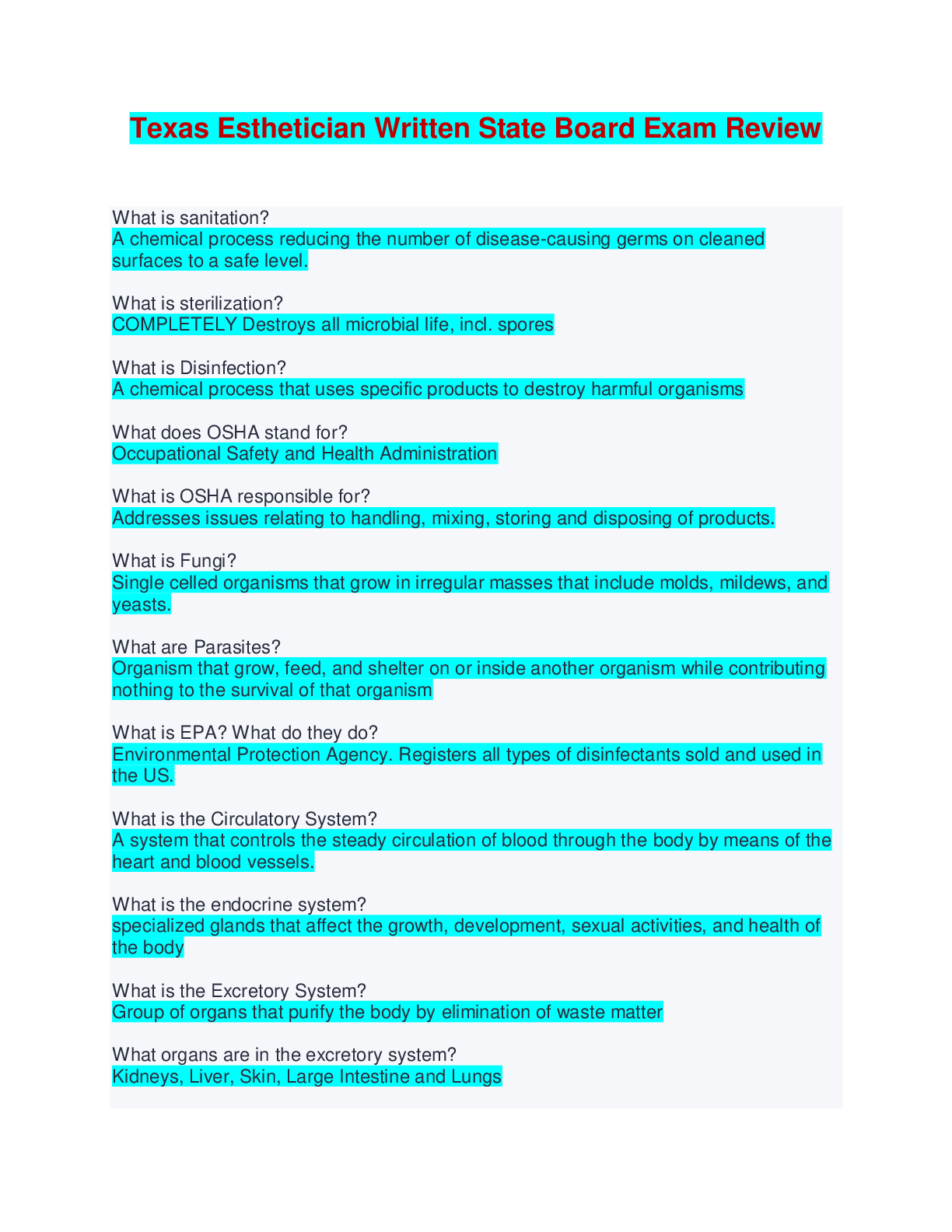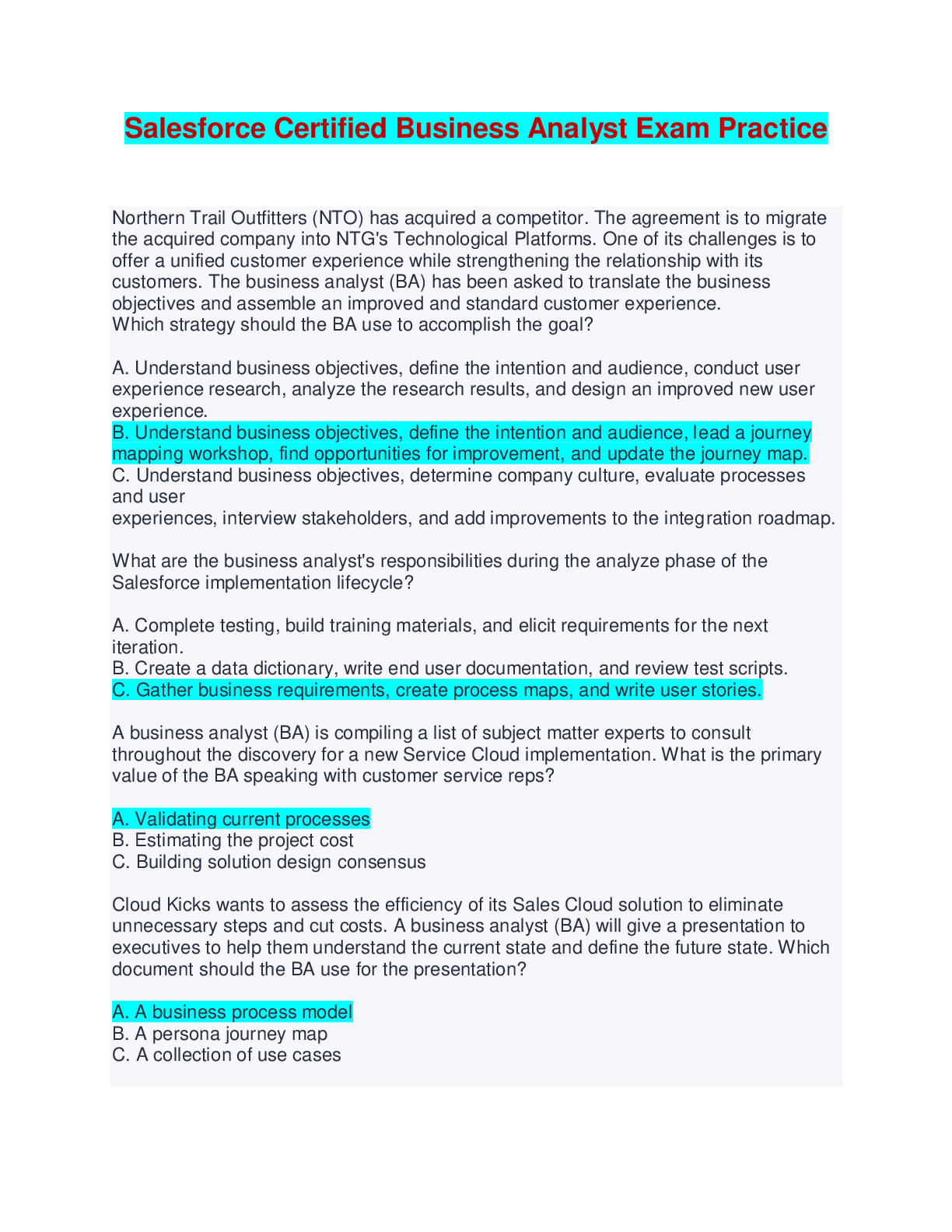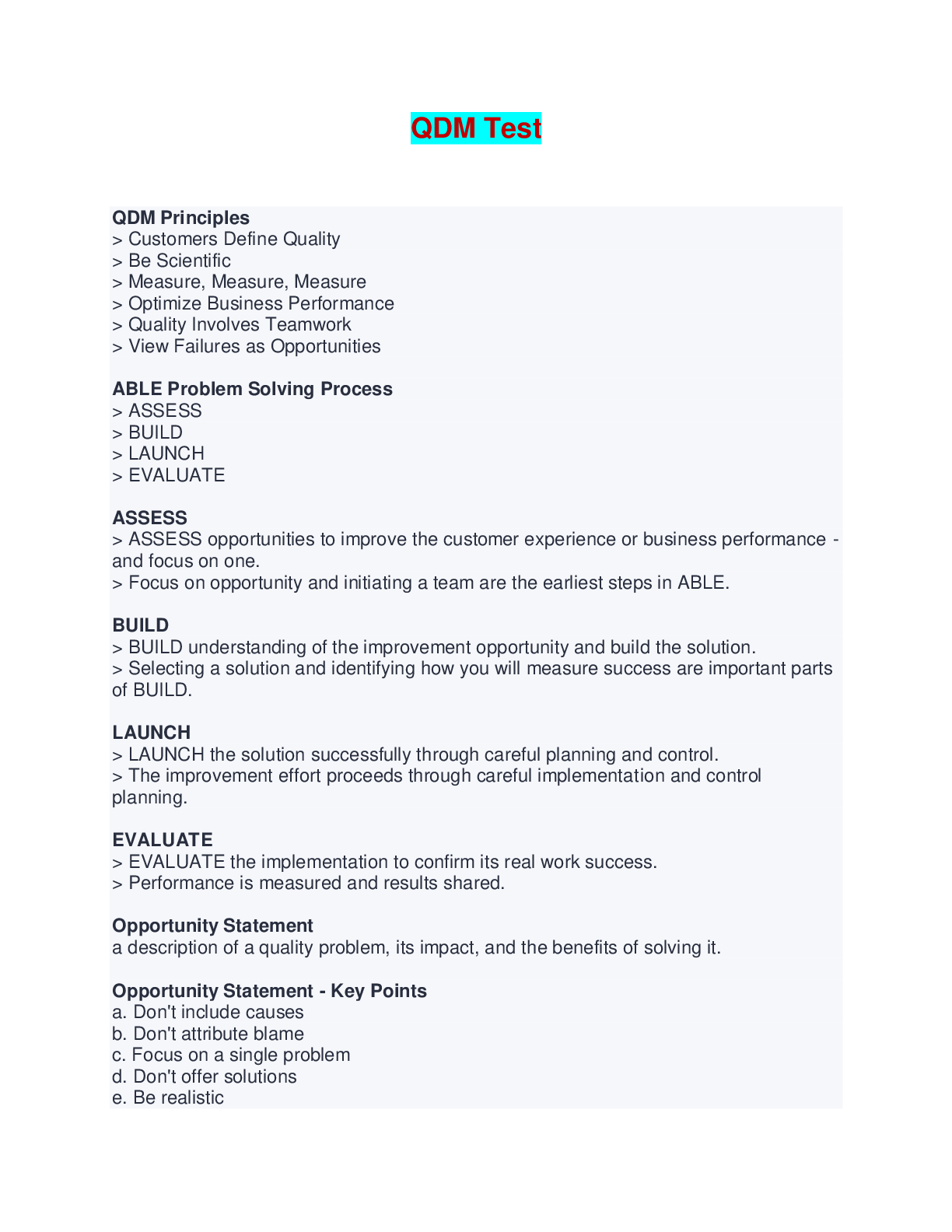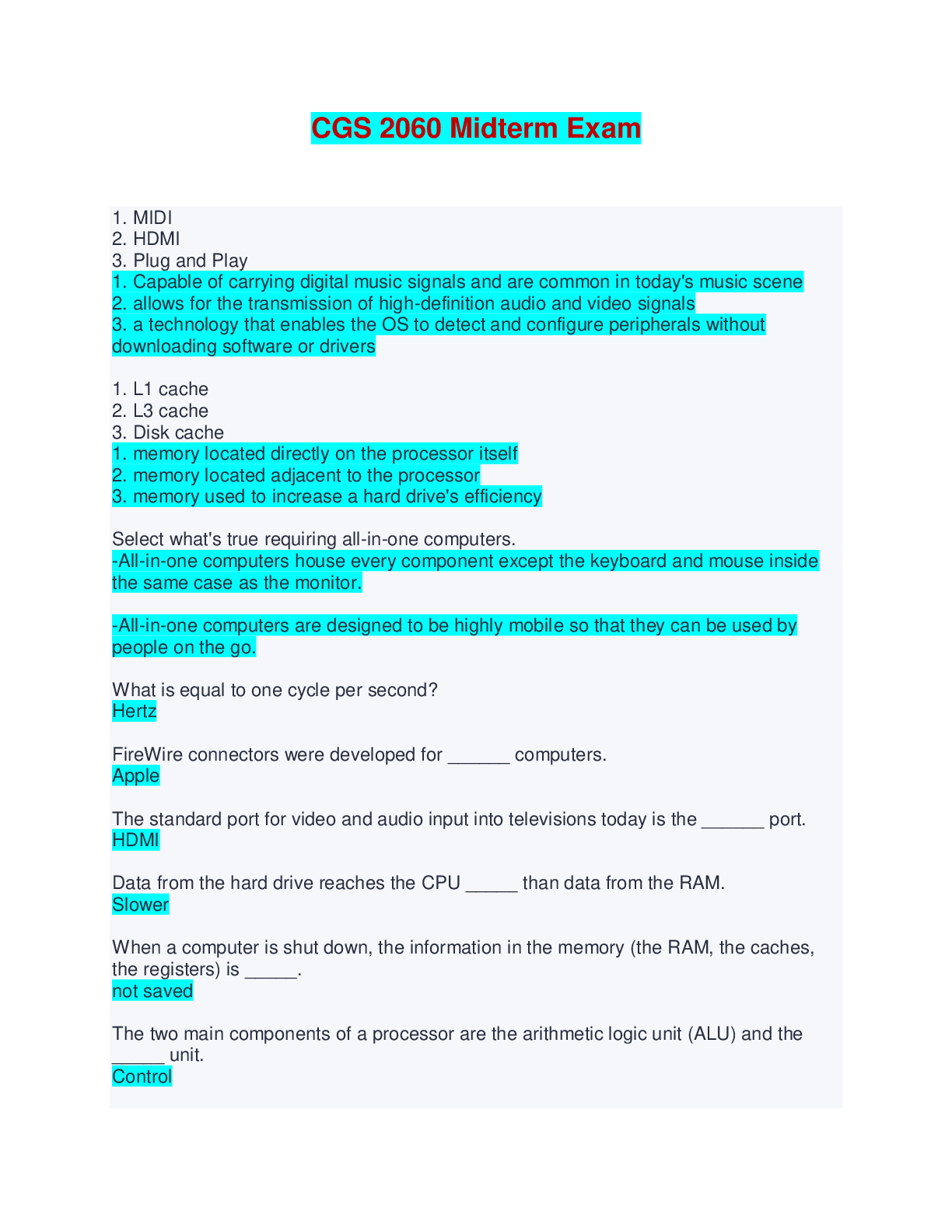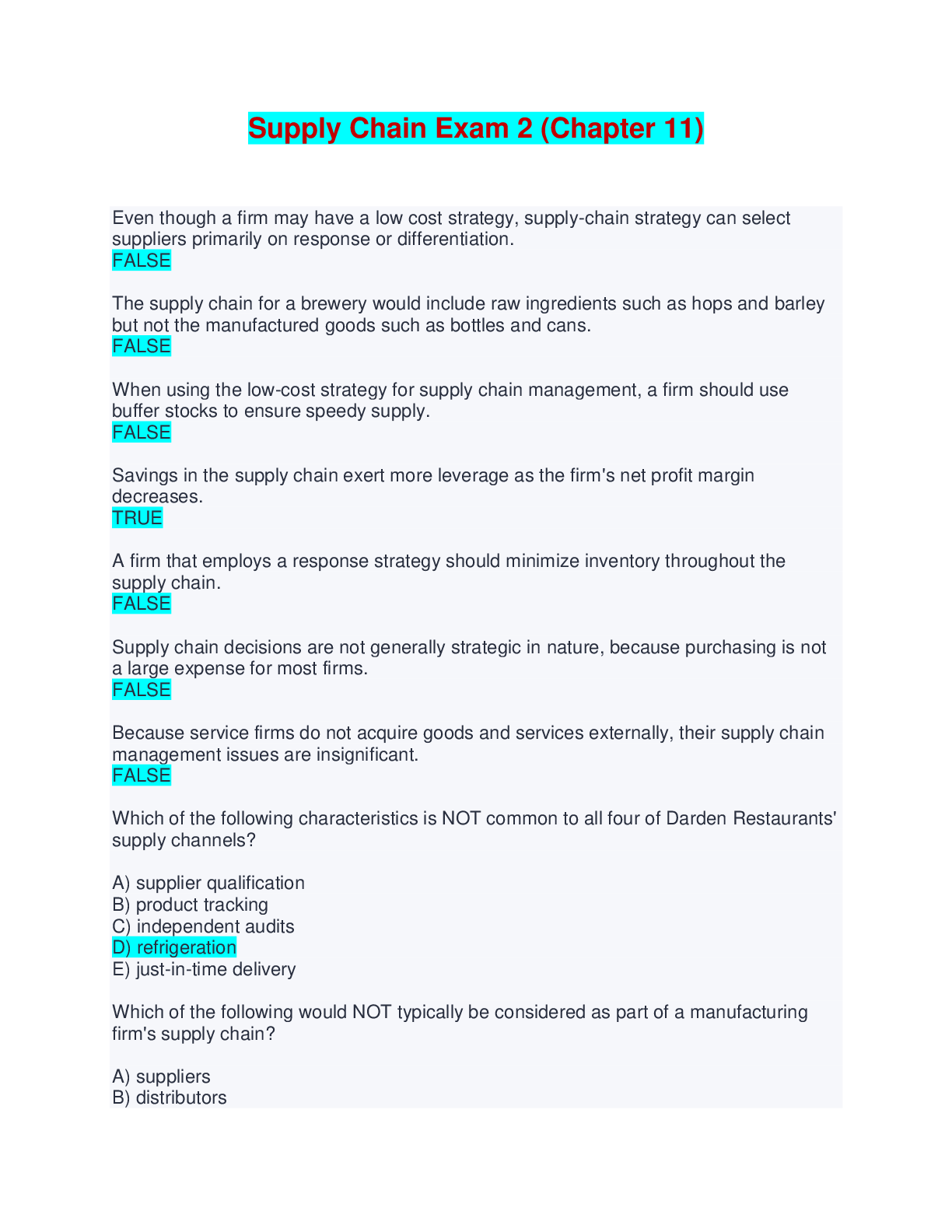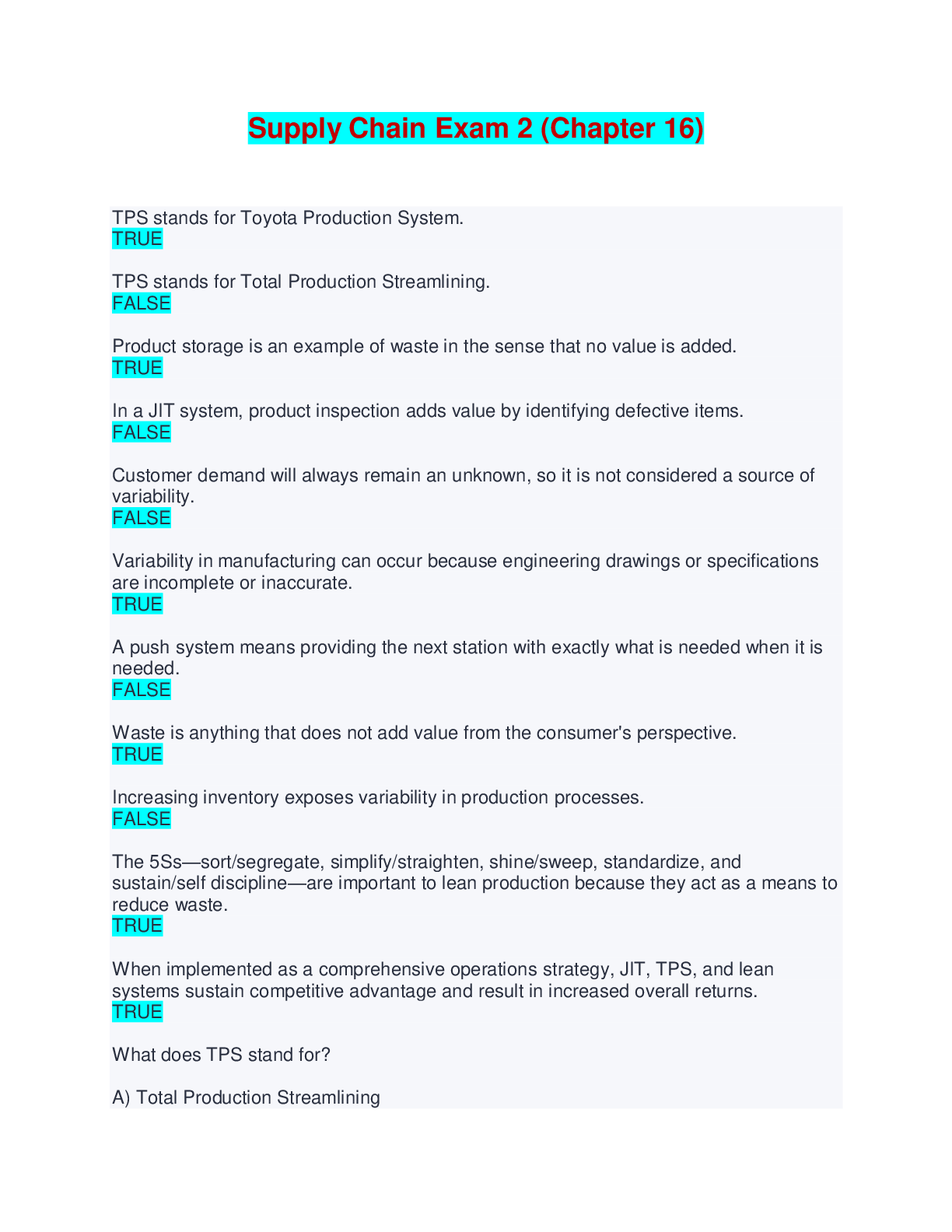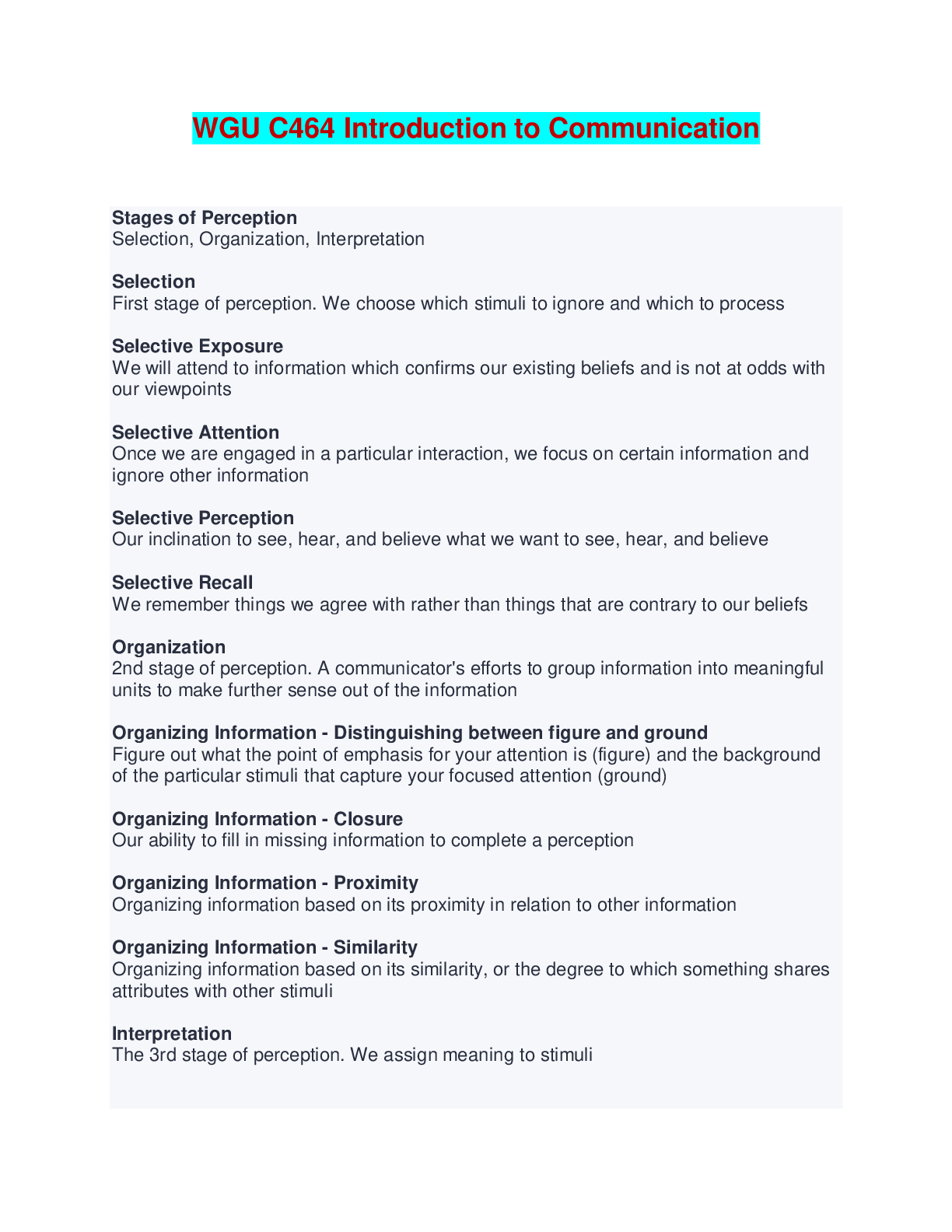Supply Chain Management > EXAM > Supply Chain Exam 2 (Chapter 8) | Q & A (Complete Solutions) (All)
Supply Chain Exam 2 (Chapter 8) | Q & A (Complete Solutions)
Document Content and Description Below
Supply Chain Exam 2 (Chapter 8) | Q & A (Complete Solutions) FedEx chose Memphis, Tennessee, for its central location, or "hub," primarily because of the incentives offered by the city of Memphis an... d the state of Tennessee. FALSE FedEx chose Memphis, Tennessee, as its U.S. hub because: A) the city is in the center of the United States, geographically. B) the airport has relatively few hours of bad weather closures. C) it needed a means to reach cities to which it did not have direct flights. D) the firm believed that a hub system was superior to traditional city-to-city flight scheduling. E) All of the above are true. Which of the following statements regarding FedEx is TRUE? A) Its hub in Memphis, Tennessee, was selected because of its low cost. B) Memphis, Tennessee, is the only hub in the company's global flight network. C) FedEx believes the hub system helps reduce mishandling and delays due to better controls. D) FedEx uses a hub system in the United States, but a city-to-city network in other countries. E) Memphis is FedEx's only hub airport in the United States. Industrial location analysis typically attempts to: A) minimize costs. B) maximize sales. C) focus more on human resources. D) avoid countries with strict environmental regulations. E) ignore exchange rates and currency risks. A location decision for an appliance manufacturer would tend to have what type of focus? A) cost focus B) focus on finding very highly skilled technicians C) revenue focus D) environmental focus E) education focus A location decision for a traditional department store (e.g., Macy's) would tend to have what type of focus? A) cost focus B) labor focus C) revenue focus D) environmental focus E) education focus As described in the book Aerotropolis, nowadays location decisions worldwide are often being based on what? A) rivers B) rail hubs C) interstate highways D) ports E) airports Why is Northern Mexico used as a cluster for electronics firms? A) high traffic flows B) venture capitalists located nearby C) natural resources of land and climate D) NAFTA E) high per capita GDP Among the following choices, an operations manager might best evaluate political risk of a country by looking at which type of country ranking? A) based on competitiveness B) based on cost of doing business C) based on corruption D) based on magnitude of government social programs E) based on average duration between presidential/prime minister elections ________ and ________ are to key country success factors as ________ and ________ are to key region success factors. A) Cultural issues, location of markets; site size and cost, zoning restrictions B) Exchange rates, labor availability; site size and cost, environmental impact C) Labor cost, currency risk; land costs, proximity to customers D) Land costs, proximity to customers; labor cost, air and rail systems E) All of the above are accurate relationships. Which of the following workers is the most productive? A) $50 wages, 10 parts produced B) $10 wages, 1 part produced C) $30 wages, 5 parts produced D) $100 wages, 21 parts produced E) $500 wages, 100 parts produced A employee produces 15 parts during a shift in which he made $90. What is the labor content of the product? A) $90 B) $5 C) $6 D) $0.167 E) $1,350 The reason fast food restaurants often are found in close proximity to each other is: A) they enjoy competition. B) location clustering near high traffic flows. C) low cost. D) availability of skilled labor. E) all of the above. Currency risk is based on what assumption? A) Firms that do not continuously innovate will lose market share. B) Values of foreign currencies continually rise and fall in most countries. C) Changing product lines by reacting to every current trend may alienate the customer base. D) The value of one dollar today is greater than the value of one dollar to be received one year from now. E) The U.S. stock market fluctuates daily. Governmental attitudes toward issues such as private property, intellectual property, zoning, pollution, and employment stability may change over time. What is the term associated with this phenomenon? A) bureaucratic risk B) political risk C) legislative risk D) judicial risk E) democratic risk Globalization of the location decision is the result of all EXCEPT which of the following? A) market economics B) higher quality of labor overseas C) ease of capital flow between countries D) high differences in labor costs E) more rapid, reliable travel and shipping In location planning, environmental regulations, cost and availability of utilities, and taxes are: A) global factors. B) country factors. C) regional/community factors. D) site-related factors. E) none of the above. Which of the following is usually NOT one of the top considerations in choosing a country for a facility location? A) availability of labor and labor productivity B) exchange rates C) attitude of governmental units D) zoning regulations E) location of markets When making a location decision at the country level, which of these would be considered? A) corporate desires B) land/construction costs C) air, rail, highway, waterway systems D) zoning restrictions E) location of markets Which of these factors would be considered when making a location decision at the region/community level? A) government rules, attitudes, stability, incentives B) cultural and economic issues C) zoning restrictions D) environmental impact issues E) proximity to raw materials and customers When making a location decision at the region/community level, which of these would be considered? A) government rules, attitudes, stability, incentives B) cultural and economic issues C) cost and availability of utilities D) zoning restrictions E) air, rail, highway, waterway systems Which of these factors would be considered when making a location decision at the site level? A) government rules, attitudes, stability, incentives B) cultural and economic issues C) zoning regulations D) cost and availability of utilities E) proximity to raw materials and customers Tangible costs include which of the following? A) climatic conditions B) availability of public transportation C) taxes D) quality and attitude of prospective employees E) zoning regulations Intangible costs include which of the following? A) quality of prospective employees B) quality of education C) availability of public transportation D) all of the above E) none of the above Which of the following statements regarding "proximity" in the location decision is FALSE? A) Service organizations find that proximity to market is the most critical primary location factor. B) Manufacturers want to be near customers when their product is bulky, heavy, or fragile. C) Perishability of raw materials is a good reason for manufacturers to locate near the supplier, not the customer. D) Reduction in bulk is a good reason for a manufacturer to locate near the supplier. E) Clustering among fast food chains occurs because they need to be near their labor supply. Which of the following is the best example of the proximity rule that, for service firms, proximity to market is the most important location factor? A) Soft drinks are bottled in many local plants, where carbonated water is added to proprietary syrups that may have been shipped long distances. B) Few people will travel out-of-state for a haircut. C) Patients will travel very long distances to have their hernia surgeries performed at Shouldice Hospital. D) Furniture makers choose to locate near the source of good hardwoods, even though it means locating near other furniture manufacturers. E) Metal refiners (smelters) locate near mines to accomplish significant weight reduction near the metal's source. Lists have been developed that rank countries on issues such as "competitiveness" and "corruption." TRUE The ratio of labor cost per day to productivity, in units per day, is the labor cost per unit. TRUE For a location decision, labor productivity may be important in isolation, but low wage rates are a more important criterion. FALSE Unfavorable exchange rates can offset other savings in a location decision. TRUE An example of an intangible cost, as it relates to location decisions, is the quality of education. TRUE In location decisions, intangible costs are easier to measure than tangible costs. FALSE Location decisions are based on many things, including costs, revenues, incentives, attitudes, and intangibles, but not on ethical considerations. FALSE Manufacturers may want to locate close to their customers if the transportation of finished goods is expensive or difficult. TRUE One reason for a firm locating near its competitors is the presence of a major resource it needs. TRUE The graphic approach to locational cost-volume analysis displays the range of volume over which each location is preferable. TRUE [Show More]
Last updated: 11 months ago
Preview 4 out of 13 pages

Loading document previews ...
Buy this document to get the full access instantly
Instant Download Access after purchase
Buy NowInstant download
We Accept:

Reviews( 0 )
$12.00
Can't find what you want? Try our AI powered Search
Document information
Connected school, study & course
About the document
Uploaded On
Jul 17, 2024
Number of pages
13
Written in
Additional information
This document has been written for:
Uploaded
Jul 17, 2024
Downloads
0
Views
51




